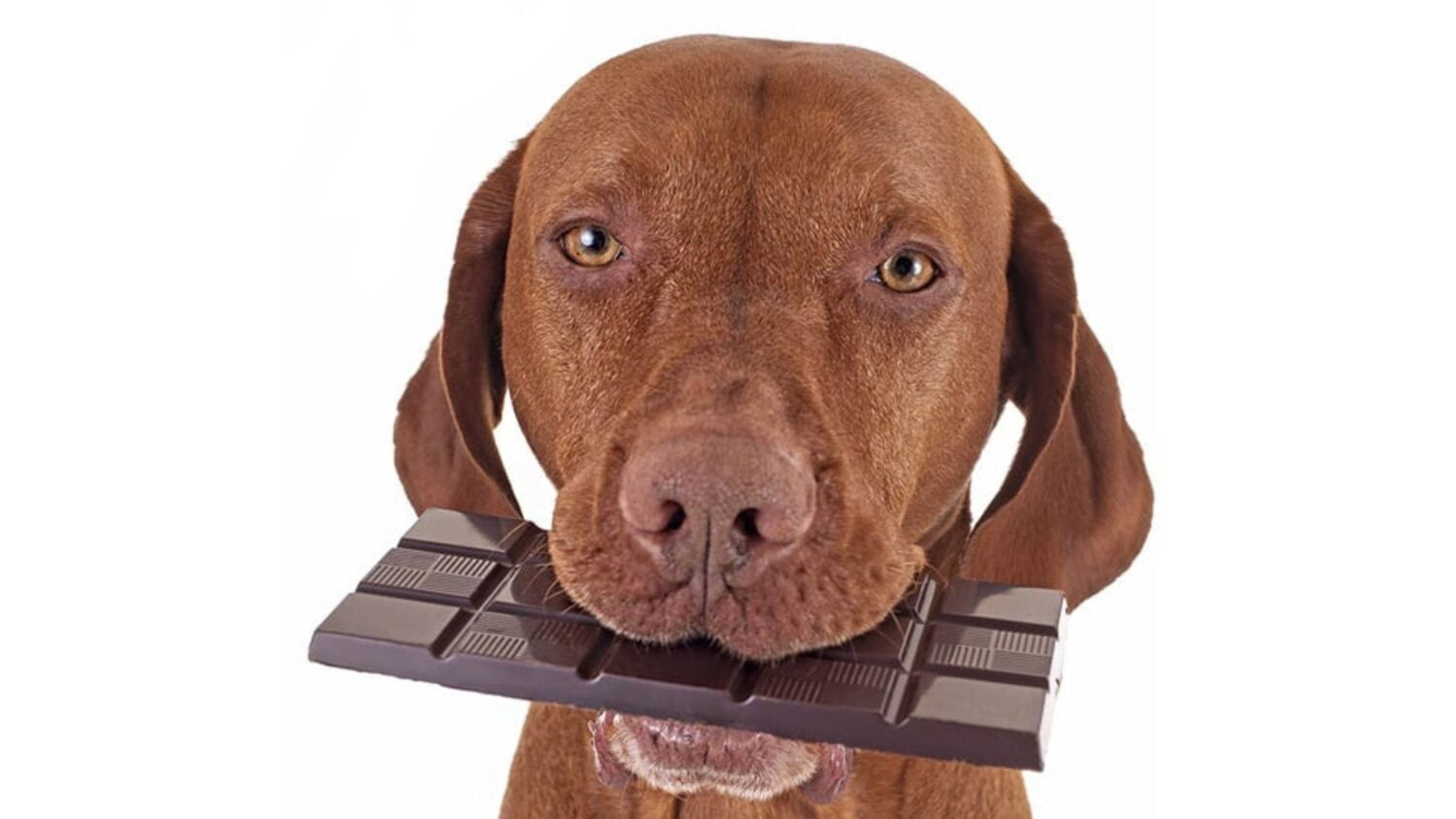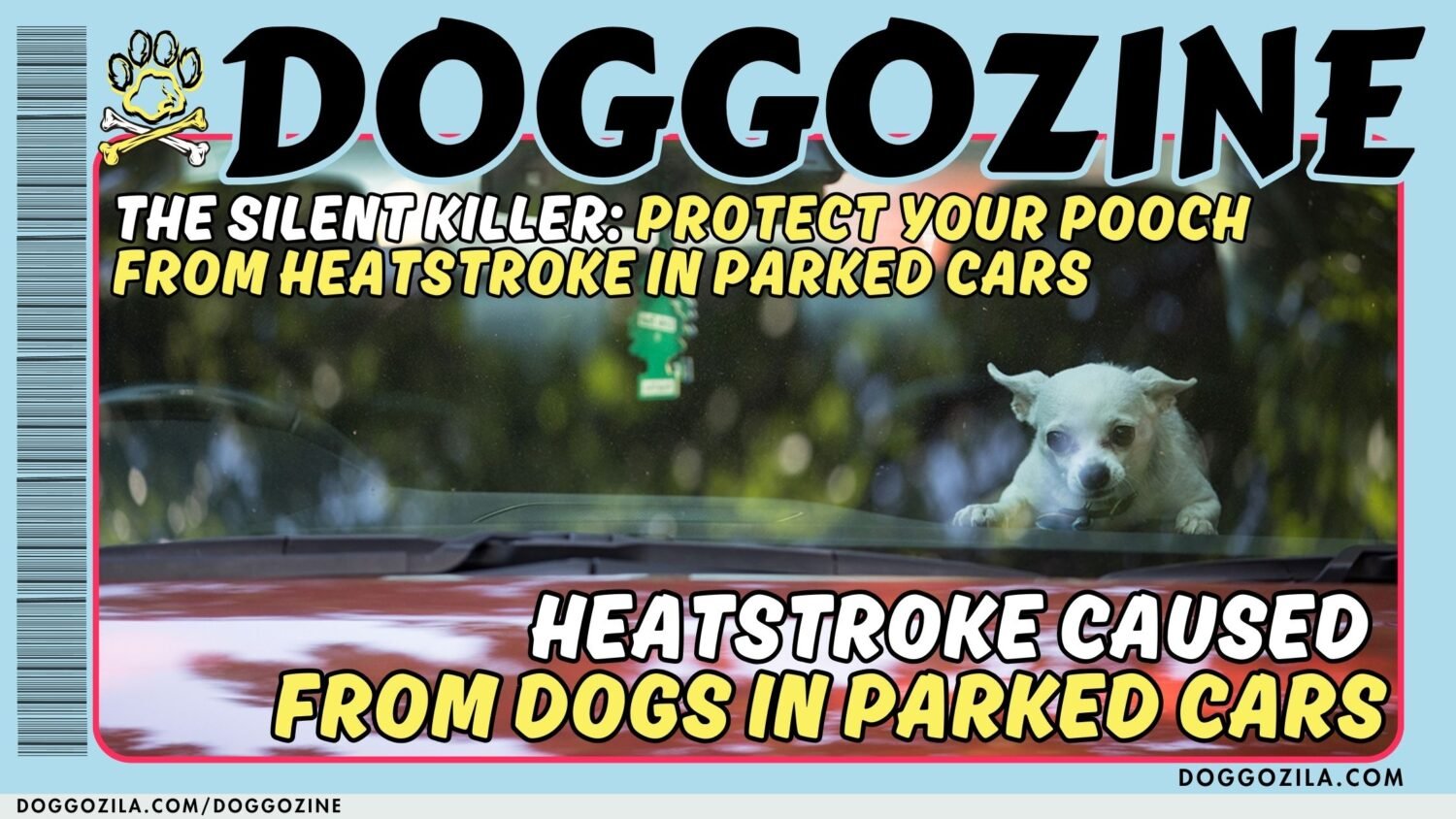Chocolate is a delicious treat enjoyed by many humans, but it can be extremely dangerous for our dogs. SO WHAT HAPPENS WHEN A DOG EATS CHOCOLATE?

UNDERSTANDING CHOCOLATE TOXICITY IN DOGS
Dogs are unable to metabolize certain compounds found in chocolate, which can lead to chocolate toxicity. In this article, we will explore what happens when a dog eats chocolate and the potential risks associated with it.
Chemicals in the chocolate
Chocolate is a delicious treat enjoyed by many, but did you know that it can be toxic to our furry friends? Dogs, in particular, are susceptible to the harmful effects of chocolate due to their inability to metabolize certain chemicals found in this sweet treat.
Chocolate contains stimulants called methylxanthines, which include theobromine and caffeine. These chemicals can have a detrimental effect on a dog’s metabolic processes, leading to chocolate toxicity. While both theobromine and caffeine are present in chocolate, theobromine is the primary concern when it comes to the health of our dogs.
What is Theobromine?
Theobromine is a naturally occurring compound found in cocoa beans, the main ingredient in chocolate. It acts as a stimulant, affecting the central nervous system and cardiovascular system. In humans, theobromine is relatively easy to metabolize, but for dogs, it’s a different story.
Dogs can’t metabolize theobromine fast like humans do, they do it much more slowly. This means that theobromine levels can build up in a dog’s system, leading to various symptoms of chocolate toxicity. The severity of these symptoms depends on the amount and type of chocolate ingested, as well as the size and overall health of the dog.
Common symptoms of chocolate toxicity in dogs include vomiting, diarrhea, increased thirst, restlessness, rapid breathing, elevated heart rate, muscle tremors, and in severe cases, seizures or even death. It’s important to note that smaller dogs are more vulnerable to the effects of chocolate toxicity, as their bodies are less equipped to handle theobromine.
Be aware and prepared for your dog
If you suspect that your dog has ingested chocolate, it’s crucial to seek veterinary care immediately. The veterinarian will assess the situation based on the dog’s size, the type and amount of chocolate ingested, and the presence of any symptoms. Treatment may involve inducing vomiting, administering activated charcoal to absorb any remaining toxins, providing intravenous fluids to flush out the system, and monitoring the dog’s vital signs.
Prevention is key when it comes to chocolate toxicity. It’s important to keep all forms of chocolate, including baking chocolate, cocoa powder, and chocolate-containing products, out of reach of our four-legged friends. Educating ourselves and others about the dangers of chocolate toxicity can help ensure the well-being of our beloved pets.

SYMPTOMS OF CHOCOLATE TOXICITY IN DOGS
When a dog ingests chocolate, it can exhibit various symptoms of chocolate toxicity. These symptoms may vary depending on the type and amount of chocolate consumed, as well as the size and overall health of the dog.
Gastrointestinal Disturbances
One of the most common symptoms of chocolate toxicity in dogs is gastrointestinal disturbances, such as abdominal pain, diarrhea and vomiting. The theobromine and caffeine present in chocolate can irritate the dog’s digestive system, leading to these symptoms. It is important to note that the severity of these symptoms can vary depending on the amount of chocolate ingested.
Increased Heart Rate
The theobromine and caffeine in chocolate can also affect a dog’s cardiovascular system. When ingested, these substances can cause an increase in heart rate. This can be observed through symptoms such as rapid breathing, panting, and restlessness. In severe cases, it may even lead to arrhythmias or abnormal heart rhythms.
Hyperactivity and Agitation
Chocolate contains stimulants that can cause dogs to become hyperactive and agitated. Dogs may exhibit symptoms such as restlessness, pacing, and an inability to settle down. This can be particularly concerning for pet owners, as it can lead to increased stress and anxiety for the affected dog.
Increased Thirst and Urination
The theobromine and caffeine in chocolate act as diuretics, which means they increase urine production. This can result in increased thirst and urination in dogs that have ingested chocolate. Pet owners may notice their dogs drinking more water than usual and needing to go outside to urinate more frequently.
Tremors and Seizures
In severe cases of chocolate toxicity, dogs may experience tremors and seizures. The theobromine and caffeine in chocolate can overstimulate the dog’s nervous system, leading to these neurological symptoms. If a dog exhibits these symptoms after ingesting chocolate, it is important to seek immediate veterinary care.
Other Potential Symptoms
In addition to the symptoms mentioned above, dogs may also experience other signs of chocolate toxicity, such as increased body temperature, muscle stiffness, weakness, and even collapse. These symptoms can be indicative of a more severe reaction to chocolate ingestion and should not be ignored.
It is crucial for pet owners to be aware of these symptoms and to take immediate action if their dog ingests chocolate. If you suspect that your dog has consumed chocolate, it is recommended to contact your veterinarian or a pet poison helpline for guidance. Remember, prevention is key, so be sure to keep chocolate and other potentially toxic foods out of your dog’s reach.

THE FACTORS AFFECTING THE SEVERITY OF CHOCOLATE TOXICITY IN DOGS
Chocolate toxicity is a serious concern for dog owners, as it can have detrimental effects on their beloved pets. The severity of chocolate toxicity depends on several factors that need to be considered to ensure the well-being of our furry friends.
The Type of Chocolate Consumed
Not all chocolates are created equal when it comes to their toxicity levels for dogs. Dark chocolate and baking chocolate contain higher levels of theobromine and caffeine compared to milk chocolate. Theobromine affects the cardiovascular system and the central nervous system in dogs as a stimulant. The higher the concentration of theobromine, the more toxic the chocolate is to dogs. Therefore, dark chocolate and baking chocolate pose a greater risk of toxicity compared to milk chocolate.
The Amount of Chocolate Consumed
The severity of chocolate toxicity is also influenced by the amount of chocolate ingested by the dog. Theobromine and caffeine can accumulate in a dog’s system, and a higher intake of chocolate will result in a greater concentration of these substances. A small nibble of chocolate may not cause significant harm, but a larger quantity can lead to severe symptoms and even life-threatening complications.
The Size of the Dog
The size of the dog plays a crucial role in determining the severity of chocolate toxicity. Smaller dogs are more susceptible to the effects of theobromine and caffeine due to their lower body weight. Even a small amount of chocolate can have a significant impact on their health. Larger dogs, on the other hand, may be able to tolerate a higher amount of chocolate without experiencing severe symptoms. However, it is important to note that no amount of chocolate is considered safe for dogs, regardless of their size.
The Dog’s Overall Health
The overall health of the dog also influences the severity of chocolate toxicity. Dogs with pre-existing health conditions, such as heart problems or kidney disease, may be more vulnerable to the toxic effects of chocolate. These underlying conditions can make it more difficult for their bodies to metabolize and eliminate theobromine and caffeine, leading to a higher risk of complications. Chocolate toxicity is a serious issue that should not be taken lightly.
The severity of chocolate toxicity in dogs depends on various factors, including the type and amount of chocolate consumed, the size of the dog, and the dog’s overall health. Dark chocolate and baking chocolate are particularly toxic due to their high theobromine and caffeine content. It is crucial for dog owners to be aware of these risks and take necessary precautions to prevent their pets from ingesting chocolate. If chocolate ingestion does occur, immediate veterinary attention should be sought to minimize the potential harm to our furry companions. As you know what happens when a dog eats chocolate, it’s better to prevent this from happening!

DOG TREATMENT FOR CHOCOLATE TOXICITY
If you suspect your dog has ingested chocolate or is showing symptoms of chocolate toxicity, it is crucial to seek immediate veterinary care. Time is of the essence, as prompt treatment can significantly improve the chances of a positive outcome. Chocolate toxicity occurs when dogs consume chocolate, which contains theobromine and caffeine. These substances are toxic to dogs and can lead to various symptoms, including vomiting, diarrhea, increased heart rate, restlessness, tremors, and in severe cases, seizures or even death.
Step 1: Contact a Veterinarian
You should contact your veterinarian immediately, if you suspect that your dog has ingested chocolate. Provide them with details such as the type and amount of chocolate consumed, as well as your dog’s weight. This information will help the veterinarian assess the level of toxicity and determine the appropriate course of action.
Step 2: Induce Vomiting (if recommended)
Your veterinarian may recommend inducing vomiting in some cases, to remove the chocolate from your dog’s system. This must be done only under the guidance of a veterinary professional. Never attempt to induce vomiting without consulting a veterinarian first, as it may be harmful or ineffective depending on the situation.
Step 3: Activated Charcoal Administration
Activated charcoal may be administered to your dog to help absorb any remaining chocolate toxins in the stomach. This can prevent further absorption into the bloodstream. The veterinarian will determine the appropriate dosage based on your dog’s weight and the severity of the chocolate toxicity.
Step 4: Supportive Care
Your dog may require supportive care to manage symptoms and aid in the recovery process. This may include intravenous fluids to prevent dehydration, medications to control vomiting or diarrhea, and monitoring of vital signs such as heart rate and blood pressure.
Step 5: Observation and Follow-up
After initial treatment, your dog will be closely monitored for any changes in their condition. The veterinarian may recommend blood tests to assess organ function and determine if any further treatment is necessary. Follow-up appointments may be scheduled to ensure your dog’s complete recovery. Prevention is always better than treatment when it comes to chocolate toxicity.
Keep chocolate and other cocoa products out of your dog’s reach, and be cautious during holidays or special occasions when chocolate is more prevalent. If you have any concerns or suspect your dog has ingested chocolate, do not hesitate to seek immediate veterinary care. Remember, time is of the essence when it comes to chocolate toxicity, and prompt treatment can make all the difference in your dog’s recovery. It’s best to prevent this as you learned by now what happens when a dog eats chocolate.

PREVENTING CHOCOLATE TOXICITY IN DOGS
Chocolate is a delicious treat loved by many,but it can be extremely dangerous for our furry friends. Dogs are particularly susceptible to chocolate toxicity, which can have serious consequences on their health. As responsible pet owners, it is our duty to prevent access to chocolate and keep our dogs safe. Let’s discuss some essential tips on how to prevent chocolate toxicity in dogs.
Educate Yourself and Your Family
The first step in preventing chocolate toxicity is to educate yourself and your family members about the dangers of chocolate for dogs. Many people are unaware that chocolate contains a substance called theobromine, which is toxic to dogs. Theobromine can cause rapid breathing, seizures or increased heart rate. Other symptoms could be vomiting and diarrhea. By understanding the risks associated with chocolate consumption, you can take the necessary precautions to keep it out of your dog’s reach.
Secure Chocolate Storage
One of the most effective ways to prevent chocolate toxicity is to ensure that chocolate is stored securely in a location that is inaccessible to your furry friend. Dogs have a keen sense of smell and can be quite resourceful when it comes to finding food. Therefore, it is essential to store chocolate in a sealed container or a high cabinet where your dog cannot reach it. Avoid leaving chocolate on countertops or tables where it can easily be knocked over or grabbed by an inquisitive dog.
Be Mindful of Gifted Chocolates
During holidays or special occasions, it is common to receive chocolates as gifts. While these gestures are thoughtful, it is crucial to be mindful of the potential risk they pose to your dog. Make sure to keep any gifted chocolates out of your dog’s reach, even if they are beautifully wrapped or placed in decorative boxes. Remember, dogs are curious creatures, and they may not be able to resist the temptation of a delicious treat. Now you know what happens when a dog eats chocolate.
Train Your Dog to Avoid Chocolate
Training your dog to avoid chocolate can be a lifesaver. Teach your dog the “leave it” command and reinforce it consistently. This command can be invaluable in preventing your dog from consuming chocolate or any other harmful substances. Additionally, it is essential to supervise your dog when there is chocolate around, especially during gatherings or parties where guests may accidentally drop or leave chocolate unattended.
Seek Veterinary Care Immediately
If you suspect that your dog has ingested chocolate, it is crucial to seek veterinary care immediately. Time is of the essence when it comes to chocolate toxicity, as the symptoms can escalate rapidly. Your veterinarian will be able to assess the situation and provide the necessary treatment to minimize the potential harm caused by chocolate ingestion.
Brief Sum Up On What Happens When A Dog Eats Chocolate
Preventing chocolate toxicity in dogs requires vigilance and awareness. By educating yourself and your family members, securing chocolate storage, being mindful of gifted chocolates, training your dog, and seeking veterinary care when needed, you can protect your furry friend from the dangers of chocolate.
Remember, prevention is always better than cure when it comes to the well-being of our beloved pets. Chocolate can be a tempting treat for dogs, but it can also be highly toxic. Theobromine and caffeine, found in chocolate, can cause serious health issues for our dogs. Recognizing the symptoms of chocolate toxicity and seeking immediate veterinary care is crucial for the well-being of our furry friends.
Chocolate Poisoning in Dogs
By being proactive in preventing access to chocolate and understanding the risks involved, we can ensure the safety and health of our beloved dogs. In conclusion, understanding chocolate toxicity is crucial for all dog owners. Theobromine, a chemical found in chocolate, can have harmful effects on a dog’s metabolic processes.
Knowing the symptoms and seeking immediate veterinary care can make a significant difference in the outcome for our furry friends. By keeping chocolate out of reach and spreading awareness, we can help prevent chocolate toxicity and keep our dogs safe and healthy. This article have shown you what happens when a dog eats chocolate, but as we mentioned it’s better to prevent it or even to train your dog to recognize if someone try to give him as a treat!
This maybe is unpopular opinion for someone else, that is why we recommend to continue research on the topic about Chocolate Poisoning in Dogs, we encourage the readers always to explore more in-depth on all topics.



